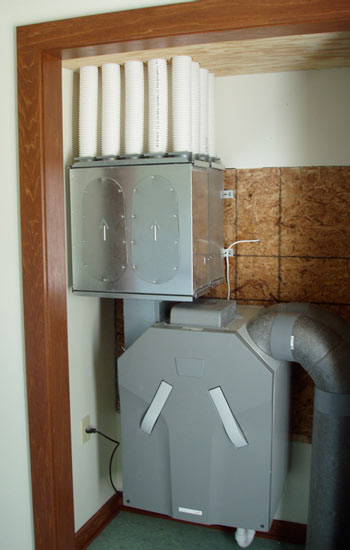Introduction to Heat Recovery Ventilation (HRV) and Energy Recovery Ventilation (ERV)
Heat Recovery Ventilators (HRV) and Energy Recovery Ventilators (ERV) play a critical role in high-performance and energy-efficient buildings. Today’s buildings have become increasingly tighter and more insulated due to building codes and energy-efficiency awareness. Without proper ventilation, tight, energy-efficient construction risks mold, mildew, and indoor air quality issues. A high-performance heat recovery ventilator ensures fresh, filtered air and a reduction of heating/cooling loads. The higher the efficiency of the heat exchanger, the less money spent on monthly heating and cooling loads and better comfort for the inhabitants. A high-efficiency HRV/ERV brings in fresh air within a few degrees of the room temperature, eliminating unpleasant drafts of fresh air caused with less efficient HRV/ERV units that bring in fresh air at significantly cooler temperatures. With a high-efficiency Heat Recovery Ventilator, a comfortable and healthy indoor environment is achieved for the energy-efficient building year-round.
What is the Difference Between a Heat Recovery Ventilator (HRV) and an Energy Recovery Ventilator (also known as an Enthalpy Recovery Ventilator)?
An HRV provides a continuous supply of fresh, filtered air to a building while recovering the heat of the exhaust air. An ERV does this but also transfers humidity. This is particularly relevant in climates such as the hot, humid Southeast climate.
How the HRV/ERV System Works: In this introduction video learn how a whole house heat recovery ventilation system works to continuously extract moist, stale air from the building and supply fresh, filtered air inside the building. Up to 90% of the heat in the exhaust air is recovered by the heat exchanger in the unit and used to heat the incoming fresh air.
FAQ: View some of the frequently asked questions and email us some of your own to
academy@zehnderamerica.com


